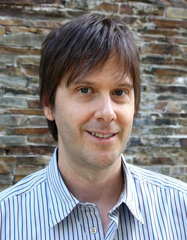Mark Cerny
From Sega Retro
| This article needs cleanup. This article needs to be edited to conform to a higher standard of article quality. After the article has been cleaned up, you may remove this message. For help, see the How to Edit a Page article. |

|
| Mark Cerny |
|---|
| Place of birth: United States |
| Date of birth: 1964-08-24 (age 59) |
| Employment history:
Divisions:
Divisions:
|
| Role(s): Programmer, Engineer, Designer, Director, Producer, Executive |
| Education: The College Preparatory School (1977-1981) |
This short article is in need of work. You can help Sega Retro by adding to it.
Mark Cerny (Czech: Marek Černý) is a video game industry figure having worked as a game designer, programmer, producer and business executive. As president of Cerny Games, which he founded in 1998, he now acts as a consultant in the video game industry.
Career
Cerny, a fan of computer programming and arcade games, started in the game industry at the age of 17 when he joined Atari in 1982. In those earlier days of professional game development, teams were small and each member was responsible for a wider range of roles than today.
Cerny's first major success is usually cited as Marble Madness in which he, at age 18, acted as the designer. For years he worked with Sega in Japan and the United States, where he worked on Sonic the Hedgehog 2. He was the vice president and then president of Universal Interactive Studios. He continues to work with Naughty Dog (where he has worked on Crash Bandicoot and later consulted on the Jak and Daxter series), Insomniac Games (Spyro the Dragon and Ratchet and Clank), and Sony.
Cerny was an early employee of Kleiner Perkins-backed video game startup Crystal Dynamics in 1992, and was de facto head of engineering during production of its first two products, Crash'n'Burn (1993) and Total Eclipse (1994). Both games were respected as technical achievements on the 3DO game platform, but were not commercial or critical successes. Both shipped late, missing most or all of the Christmas 1993 selling season. As deadline pressure mounted through 1993, Cerny developed a mercurial reputation within the company. Amid slipping deadlines and mounting losses, his engineering leadership role was challenged by the hiring of David Kirk as Chief Scientist. Cerny abruptly resigned from Crystal Dynamics several weeks later, in early 1994. The company was sold to Eidos in 1998 after consuming more than $80 million in venture money.
From his extensive experience on the "do's and don'ts" in the game industry he has developed the "Cerny method", a strategy for game development. His method prefers a free-form, pre-production stage that explores a game's viability prior to full development. For example, he advocates that if the first level produced does not excite customers, then the game idea should be set aside before too much effort is put into it.
The International Game Developers Association awarded Cerny with the Lifetime Achievement Award at the Game Developers Choice Awards on March 24, 2004, calling him the "master collaborator". His success rests not only on the number of games he's worked on, but also on their quality and commercial success (having sold several dozen million units).
He also served as the lead architect of Sony's PlayStation 4 and PlayStation Vita.
Production history
- Zillion (Master System; 1987) — Programmer
- Missile Defense 3-D (Master System; 1987) — Programmer
- Missile Defense 3-D (Master System; 1987) — Designer
- Maze Hunter 3D (Master System; 1988) — Programmer
- Shanghai (Master System; 1988) — Programmer
- California Games (Master System; 1989) — Programming
- Sega Game Toshokan (Mega Drive; 1990) — Programmer
- Dick Tracy (Mega Drive; 1991) — Programmer
- Kid Chameleon (Mega Drive; 1992) — Programming & Software[1]
- Kid Chameleon (Mega Drive; 1992) — Software[2]
- Marble Madness (Mega Drive; 1991) — Designer/Graphics Programmer[3]
- The Ooze (Mega Drive; 1995) — Programming & Technical Thanks[4]
- Shooting Gallery (1987) — Programming & Designer
- Sonic the Hedgehog 2 (1992) — Programming & Development Support
Interviews
- Interview: Mark Cerny (2004-03-12) by IGN
- Interview: Mark Cerny (2004-04-01) by Gameindustry
- Interview: Mark Cerny (2006-12-05) by Sega-16
Photographs
- Main article: Photos of Mark Cerny
External links
- Mark Cerny on Twitter
- Cerny Games, Inc.
- Production Genius Mark Cerny to Receive IGDA's Lifetime Achievement Award at 4th Annual Game Developers Choice Awards (February 9, 2004)